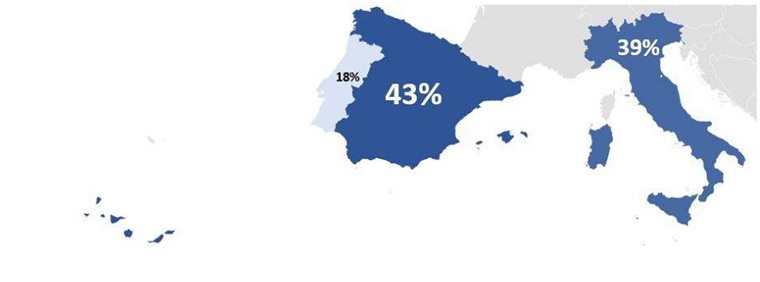
Economic activities are increasingly facing the challenge of transitioning towards circular models to enhance sustainability. Aquaculture is not exception to this challenge, which highlights the need to identify areas for improvement.
To promote the principles of circular economy within aquaculture, Maria Cozzolino, a PhD student in the Department of Economics at the University of Messina and co-founder of NISEA (a research cooperative focusing on the socio-economic, environmental, and statistical aspects of the fisheries and aquaculture sector), has been conducting comprehensive research into the current interest in transitioning to a circular economy.
Her initial approach was to analyse how academic circles are addressing circular economy principles in aquaculture. This involved conducting a literature review and sector analysis to explore how circular practices could transform intensive aquaculture by reducing its environmental impact and optimizing resource use.
This research has been made possible with the support of the ESF REACT-EU fund, under the PhD Innovation and Green ex DM1061 programme, Cycle XXXVI-2021, and is set to conclude by the end of 2024.
The principles of circular economy align with the “4Rs” of waste hierarchy: reduce, reuse, recycle, and recover. However, Cozzolino points out that most circular practices discussed in academic literature focus primarily on resource reduction, leaving significant room for incorporating other approaches.
As Cozzolino explains for misPeces, studies on circular economy in aquaculture have grown rapidly since 2018, driven by global initiatives such as the FAO’s Blue Growth initiative and the European Green Deal. These programmes have spurred a shift towards a low-carbon economy, drawing increasing attention from the academic community.
Between 2021 and 2022, interest surged significantly, with over 80% of publications focusing on creating value from waste and leveraging renewable resources. This momentum underscores aquaculture’s critical role in fostering economic and environmental sustainability. The rise in academic studies on circular practices may also be linked to the adoption in Europe of the strategic guidelines, “Strategic Guidelines for a More Sustainable and Competitive EU Aquaculture (2021-2030)”, which explicity call for rethinking aquaculture paradigms through circular transitions.
 Copyright: M. Cozzolino
Copyright: M. Cozzolino
In the Mediterranean region, countries like Spain and Italy have emerged as leaders in adopting circular economy practices in both marine and freshwaters environments. This is evident in the substantial number of studies addressing this integration, providing examples of how industry and academia are working together to develop innovative solutions that can be replicated globally.
According to Cozzolino’s findings, 60% of the studies focus on reusing aquaculture by-products, targeting industries such as nutraceuticals, biotechnology, food production, and feed for other aquatic species.
For Cozzolino, “it is essential to minimize the consumption of natural resources and valorize by-products,” such as collagen and omega-3 extracted from fish waste, or molecules derived from shellfish shells that could even be used in construction. This approach not only delivers environmental benefits but also fosters synergies across productive sectors, potentially generating positive impacts on local economies.
Despite the progress made, the transition towards a circular aquaculture model is not without its challenges. Among these, Cozzolino highlights the lack of integration between circularity principles and the scarcity of economic and social data in existing studies.
It is also crucial to investigate how factors such as geographical location and farming systems affect the implementation of circular practices. Cozzolino stresses the need of a “robust methodological framework to assess the environmental impact of circular economy practices in aquaculture.” Identifying barriers and enablers will also be key to encouraging broader and more effective adoption of these principles.
For example, Cozzolino explains that Life Cycle Assessment (LCA) is a valuable tool for measuring the environmental effects and benefits of transitioning to a circular economy.
He ongoing research will soon present the results of a national survey involving companies in the sector. This analysis is expected to provide valuable data to guide business, policymakers, and investors. In some cases, companies are already applying circular economy principles, often naturally and with little awareness of doing so.
Cozzolino concludes by emphasizing the importance of financial support to advance in this filed. “These efforts not only enhance our understanding of the opportunities by the circular economy but also inspire producers and scientists to collaborate in accelerating the transition to a more sustainable and efficient model.”




